Olympus Trip 35 Film Camera Review
A cult classic, an engineering marvel, and an excellent value for a modern film photographer.
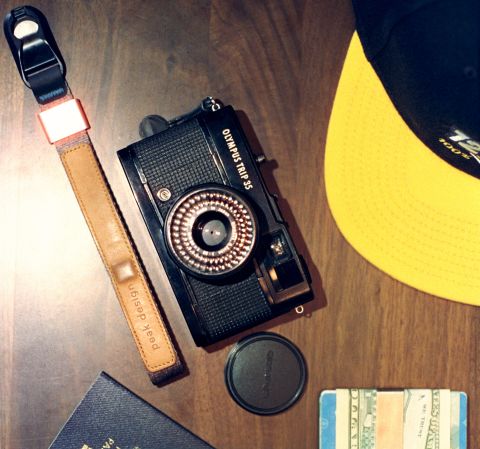
Olympus Trip 35 is one of the most popular 35mm film cameras ever produced. It’s affordable, it’s easy to use, the lens is sharp, it needs no batteries, and it’s compact.
Trip 35 uses a scale focus system, which may seem daunting at first — but it’s not difficult, and the camera has unique aides to help you get the right distance — I’ll explain below.
I’ll also cover all the basics of operation (including the auto and manual modes), lens performance, and build quality of this excellent entry-level Olympus film camera .
➜ Get the manual for Olympus Trip 35 . In this review: Why is Olympus Trip 35 a favourite of so many photographers ? Olympus Trip 35 specs and features . Free Olympus Trip 35 manual download . Taking the first photo with Olympus Trip 35: loading film & setting focus . Olympus D. Zuiko 40mm 𝒇2.8 lens . Olympus Trip 35 portability and ease-of-use (ergonomics) . Olympus Trip 35 build quality & variations . Trip 35 mods, hacks, and repairs . How much does Trip 35 cost, and where to find one . Support this blog & get premium features with GOLD memberships !

Why is Olympus Trip 35 a favourite of so many photographers?
Olympus Trip 35 is not an expensive camera. It has decent specs, but it’s not the sharpest, fastest, or most compact camera. Yet, it’s loved by many photographers of all levels today.
Back when it was introduced — over 55 years ago — it was a huge hit. The camera was in production for 15 years, having sold between five and ten million units .
Trip 35 sold for $59.95 at launch in 1968, or $530 in today’s money. But you may still find a working copy for $50 in 2024!
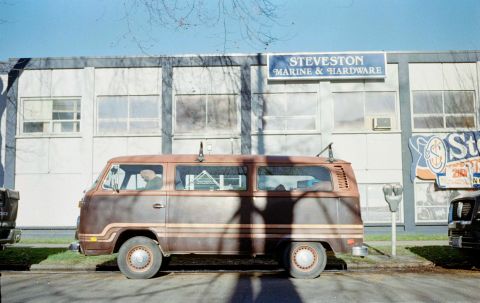
But it’s not just the price that makes this camera good. Trip 35s are built very well with lots of metal components and an excellent glass lens. They are a pleasure to hold and use. They’re nearly pocketable and don’t require any advanced photographic know-how or a manual to get started: if you know how to load film , you can use this camera.
🤓 Trip 35’s automatic exposure system that chooses an aperture and shutter speed by converting light energy into mechanical force is of particular interest to film nerds like me. Though many fancy cameras from the era used selenium light meters for aperture or shutter-priority modes, Trip 35 combined both functions in a relatively simple and remarkably reliable design .
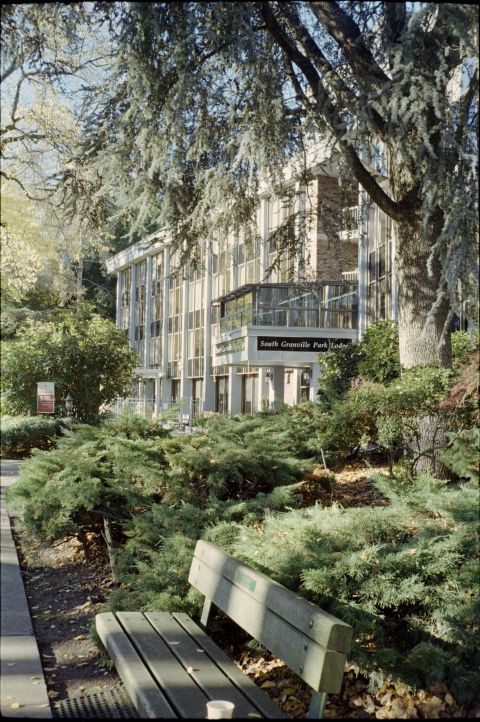
Olympus Trip 35 specs and features.
Trip 35 is a successor to Olympus PEN (namely, EES and EES-2) cameras’ excellent mechanical/optical design and portability.
My black paint brass Olympus Trip 35 version weighs 413g/14½oz , though some copies of this camera may weigh up to 20g lighter. The camera is nearly pocketable at 12×7×6cm (4 ½ ×2¾×2¼”), though it’s not the smallest .
Olympus Trip 35’s remarkably small (for the time) dimensions and ease of use are undoubtedly at the core of this camera’s name and ethos: a camera that’s easy to throw in a small bag or a pocket for a trip.
☝︎ Further reading: “ How to Travel With Film Through Airport Security .”
The leaf shutter on Olympus Trip 35 has two speeds: 1/40s and 1/200s. It can switch between the two automatically via the mechanical trap-needle system. In manual mode, Olympus Trip 35 only uses the 1/40s shutter speed. There are no Bulb and no self-timer modes.
The lens is a non-interchangeable Olympus D. Zuiko 40mm 𝒇2.8-22 (four elements in three groups). The closest focus distance is 1m/3ft. The lens uses an odd 43.5mm screw-in lens filter thread that can be adapted to the more common 40 or 46mm threads .
Fully automatic exposure (A) is controlled mechanically by converting ambient light energy via selenium cells (bubbles around the lens) into mechanical movements that modify the aperture and shutter speeds. The camera can be operated manually via the aperture ring around the lens, which will always trigger the shutter at 1/40s if not set to A. The exposure meter is operational between EV8 and EV17 ; it accepts films with ISO 25 — ISO 400 (which needs to be dialled in manually before shooting). No batteries needed.
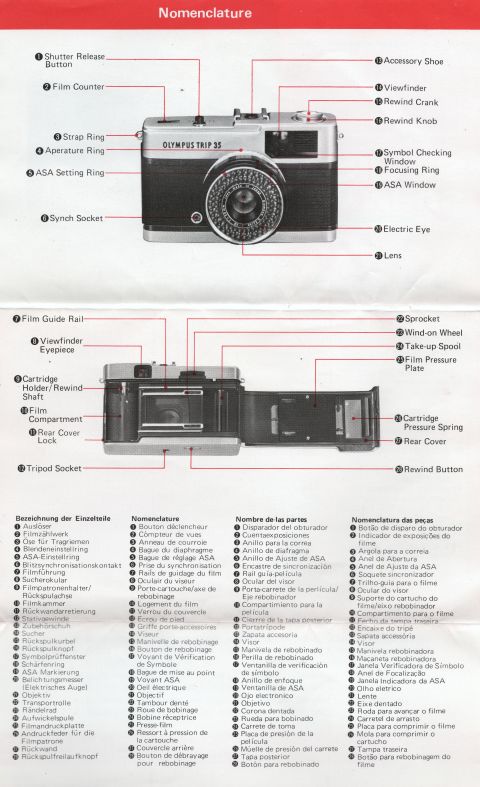
The viewfinder features a mechanical “red flag” warning system for scenes with insufficient lighting (the camera will also prevent exposures in those conditions). It shows bright lines with parallax markings inside a small but bright window with 0.55x magnification. The eye relief isn’t great, but if you aren’t wearing glasses, you’ll notice a “ Judas window ” that overviews the camera’s shooting mode and distance settings.
Film advance is done with a thumb wheel; rewinding via the rewind knob is unlocked with a rewind button; the film cover opens with a small latch a the bottom-left when looking at the camera’s back.
Hot shoe and a PC socket are available for flash sync. Learn how to use flash with cameras like Trip 35 here .
Free Olympus Trip 35 manual download.
I’ve recently scanned the manual that my camera came with and converted it to a convenient PDF file that you can download for free here:
➜ Free Download : Olympus Trip 35 Instructions Manual (PDF)
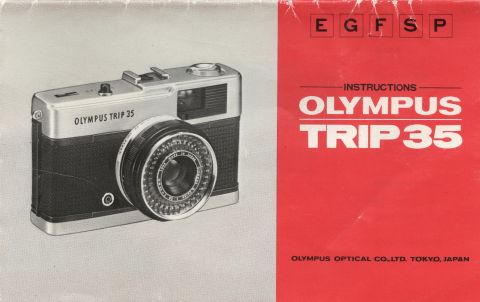
This manual took some cropping and assembly as its pages aren’t standard (it’s folded like a map). I hope that this little bit of extra effort makes it easier to read on your screen. However, I’m not sure how well it will look in print.
You’ll be asked to sign up for a free account with Analog.Cafe. It comes with access to more downloadable guides, additional website features, and a monthly community newsletter.
Taking the first photo with Olympus Trip 35: loading film & setting focus.
Trip 35 is easy to load — the only tricky part is finding the latch to open the film door. ( If you’ve never loaded film in these types of cameras, check out this guide .)
Given that you’ve loaded your Trip 35 with film rated between ISO 25 and 400, you’ll need to set the ASA/ISO dial to match your film speed . In general, ISO 100-400 films do best with this camera (a higher-ISO film works best in subdued light, and lower-iso film provides finer grain).
For automatic exposures, the ring around the lens closest to the camera body should be set to “A.” But manual exposures are possible at the constant 1/40s shutter speed (can be metered as 1/30s) with the apertures selected via the same ring (i.e., any number other than the “A”). Learn how to shoot film cameras in manual mode here .
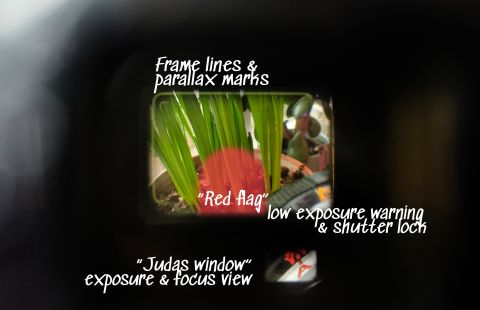
I appreciate the bright frame lines with parallax markings in the viewfinder . They make framing feel a little easier than on cameras with masks . Though I would prefer the self-illuminating kind.
The viewfinder window is fairly small. It’s usable with the glasses on; however, I had to use contacts to take advantage of the “Judas window” — a small secondary view below the main finder frame lines that shows the set distance icon and camera shooting mode/aperture.
Pointing the camera at things that are insufficiently lit for the film ISO/ASA set on the camera would raise a small translucent red plastic flag and block the shutter button. This would not happen when the camera is in manual mode (i.e. when an aperture value is selected instead of the “A”).
Olympus Trip 35’s shutter button provides medium-high resistance, it has a long travel distance, and it’s very well-balanced with the rest of the body for shake-free hand-held exposures . The leaf shutter is also shake-free (though it feels a little loud for what it is ).
Trip 35 uses a zone-focusing system. For a casual photographer, it works by turning the focus ring around the lens until it clicks to either a single-person icon 👤 for portraits, a two-person icon 👥 for group portraits, a red “group-snap” icon ⍒.⍒ , or the mountains icon 🏔️ for landscape photos.
Below the lens barrel, there are more precise focus markings in feet and metres. Learn how to zone-focus quickly and accurately here .
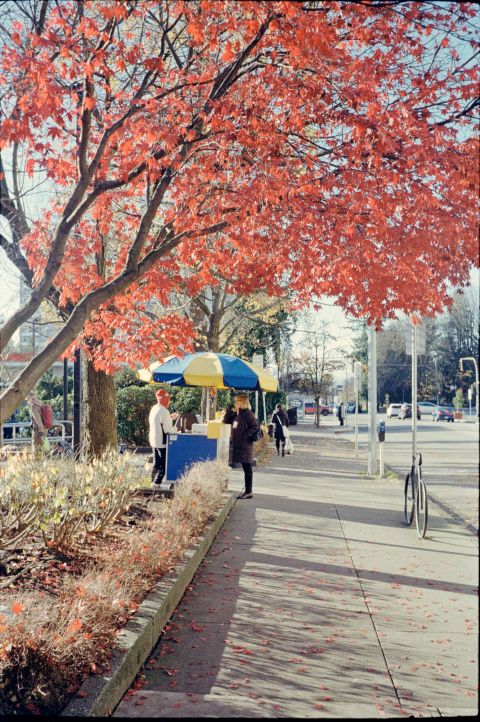
Olympus D. Zuiko 40mm 𝒇2.8 lens.
One of the most celebrated components of this camera is its lens. It’s very sharp in the middle , especially at 𝒇5.6-8 , with only minor swirl and softening in the corners.
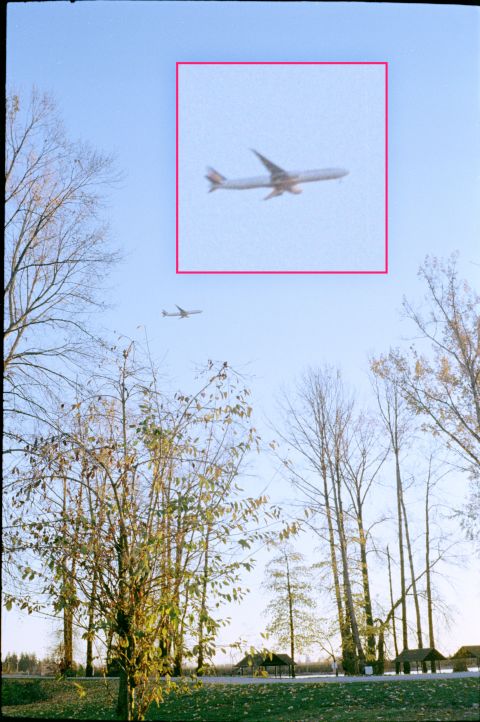
The lens renders a medium-low amount of contrast on my copy, but the coating appears to work well, as I noticed no overwhelming or unexpected flaring in any of my photos.
Overall, I found D. Zuiko 𝒇2.8 well-corrected, suitable for reproducing fine detail on high-resolution films.
The 40mm focal length is common and well-suited for a non-interchangeable camera system. It translates to ~57° diagonal angle of view — very close to the 60° in our central vision . Essentially, this means easy framing for most situations.
The 40mm D. Zuiko may not be appropriate for interior/architecture photography, close-ups, telephoto, or certain landscape images.

Olympus Trip 35 portability and ease-of-use (ergonomics).
Even though Trip 35 isn’t the smallest or the lightest 35mm film camera , it’s reasonably portable for the type of lens it uses and a full metal body. All of its controls are perfectly positioned for quick, intuitive action. With a little practice, you can use this camera one-handedly.
I kept mine in wool jacket pockets and hoodies with no issues. Despite fitting will in hand, Trip 35 is noticeably hefty; my Peak Design wrist strap solved any danger of dropping this camera.
Olympus Trip 35 build quality & variations.
Trip 35 was a remarkably successful design; understandably, Olympus didn’t want to change it much while it continued to make record sales. All of the Olympus Trip 35s look nearly identical, with some known changes introduced in the 1970s that had little effect on appearance and no effect on performance (i.e. a plastic shutter button instead of the metal one).
The only significant divergence from the standard design was the black paint brass Trip 35 , which remained in production for just two years. This variation is much rarer than the silver aluminum bodies, but in Olympus’ world, this means that there are less than a hundred options available at any time, and they cost $50 extra.
If you plan to keep this camera for a while and are willing to spend a little more, the black version may be worth it (if you like the look of brassing). It has excellent build quality and an impressive appearance; every part fits perfectly, in line with what you’d expect from the much more expensive Olympus PEN half-frame SLRs .
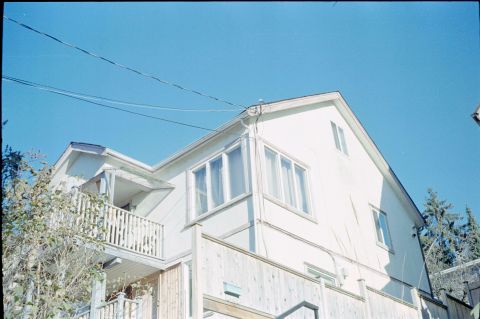
But despite their clever design and quality assembly, Trip 35s can be prone to deterioration.
In my copy, the light meter over-exposes every brightly lit frame by 1-2 stops. It’s difficult to say if it’s the time taking a toll on the intricate cells or if it’s the imprecise nature of the selenium metering that’s preventing me from taking perfectly exposed images.
A clever photographer can always compensate by setting the film ASA/ISO higher in full sun or shooting Trip 35 manually. But if you’re looking to get a copy, you should verify that the camera is sold as fully functional . An online listing would say that in the title or the description.
Trip 35 mods, hacks, and repairs.
Repairing Trip 35s may cost as much or more than the value of the camera. The good news is that simple fixes (like cleaning oil of the shutter and aperture blades) aren’t difficult if you’ve got the right tools and know-how.
Another common issue with cameras this old is the light seals. The soft, spongy material tends to crumble over time, which in turn can create light leaks . I have a guide on fixing that quickly and cheaply here .
Being a mechanical camera with manual controls, Trip 35s can survive past the span of the selenium cells that power its fully automatic shooting mode. Some photographers may prefer to use the camera in the manual mode for more precise control over exposure. You may even modify yours to shoot with the faster 1/200s shutter speed for improved action snaps and reduced motion blur.
How much does Trip 35 cost, and where to find one.
Olympus Trip 35 film camera is a fantastic value in terms of fun, image quality, and build quality. Most copies of these cameras can be bought between $20-120 — depending on the condition. And a few bucks more can get you the rare-ish black paint version .
❤ By the way: Please consider making your Olympus Trip 35 purchase using this link so that this website may get a small percentage of that sale — at no extra charge for you — thanks!
About this article :
It can take five hours of work (or more) to write and proof a quality five-minute read with high-res illustrations. Below are the people who made this one possible. All content is reviewed, styled, and edited by Dmitri .
Support Analog.Cafe !
Photographers from all walks of life rely on Analog.Cafe’s resources to advance their hobbies and careers. They prefer our small independent website for its searchable, high-quality written content, helpful web apps, and ad-free, privacy-friendly browsing experience. But it needs your help:
Olympus Trip 35: A World-Famous Classic
A world-famous classic, selling millions of units worldwide, that’s the Olympus Trip 35. This means plenty are available in thrift stores, op-shops and across the internet. It’s no wonder then that so many people with a renewed interest in film photography end up with a Trip. What is incredible is that such a cult following has sprung up around them.

The Lomo LC-A’s following loves the quirks of the LC-A. Yes, it’s capable of very sharp images, is amazingly flexible with its almost limitless shutter speeds and the new LC-A+ can achieve very high film speeds. It’s renowned for it’s lovely vignetting, an effect I enjoy very much drawing the observers eye to the middle of each print. However, sometimes you want something more accurate, more lifelike and that’s when the Trip comes in handy.
In short, the Olympus Trip 35 give you the same quality of shot (or better) than a far more expensive SLR would. If you get the focusing right (it’s a zone focus camera so, like the LC-A, you must practice guessing distances before perfect focussing becomes natural) then images can be tack sharp with no distortion of any kind, and only occasionally minimal vignetting.

This makes it a marvelous alternative to a far larger, inconvenient, heavier SLR . The Trip can be carried in a handbag (or man-bag!) easily and like the LC-A be used in a truly fast way. Many rave about the Trip, but it is unfair not to bring your attention to some of the quirks that make it a companion, and not an alternative to the LC-A.
When the Trip was in production, films were not as fast as they are today, this means the ISO settings on the camera are a bit strange, starting at 25 with very minor increments it only goes as high as 400. With today’s films being much finer grain and not as slow the only really useful ISOs are between 100 and 400.
There are only two shutter speeds, 1/200 and 1/40. This means that you will only ever achieve those tack sharp images it’s famous for, in brightish light, shake can be very evident at 1/40. The camera’s lens is quite bright at f2.8, but still, this is not as flexible as the LC-A+ .

Still thinking of buying a Trip? Good. Mine has become one of my favorite cameras and I recommend it. If you do, make sure you check the light meter is working, that the ‘little red flag’ isn’t stuck. One thing you will have to do is replace the seals. After some light leaks (who wants a leaky Trip? Its quality is the point!), I replaced the seals, easy and fast (message me for a contact who makes the kits to do so) and since then I haven’t had a problem.
Even in quite poor light with expired film, the Trip is capable of capturing amazing detail in the grass in the first shot, right to the corners of the shot — one oddity here is the vignetting, I only ever get that with expired film.
Technicalities aside, the one last word I have to say about the Trip is this. It’s beautiful. You simply cannot disagree it’s miniature SLR aesthetics, silver, and black trim… what a pretty thing.

This article was written by Lomographer adam_g2000 . Upload your shots to your LomoHome using the Olympus Trip 35.
written by adam_g2000 on 2012-03-02 #gear #35mm #review #trip #camera #colour #olympus #sharp #lomography #35 #user-review #accurate
trip35snapper , mnoon12 , lizkoppert , martinpruv , twizzer88 , jackpumpkinhead , domo-guy , mialee , pcrlaban , snowybub , lomoeugenio , imanskoi , gdc , tahe87 , crevans27 , neanderthalis , szzs , lomodesbro , clogged , larrywzh , foodeanz , superlighter , wuxiong , arifrodriguez , lighthouse_keeperess , uncle_jay , k_melancholy , alex34 , kuryzu , plasticpopsicle , vgzalez & sidsel .
19 Comments

Nice galleries. It seems like a highly functional point-and-shoot, which is sometimes exactly what you want/feel like (I have a Beirette VSN for that). Good review.

Love the camera.....<:) nice review too...<:)
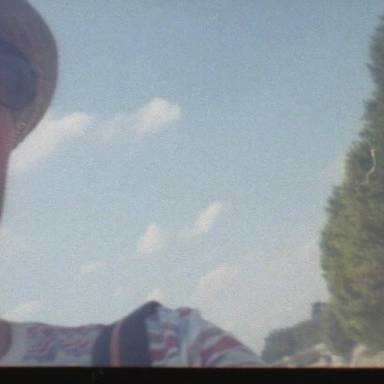
Dusting mine off right now, nice review!

Now i know how incredible performance that the Tip have...=) thanks for sharing...

@foodeanz I don't think I gave it enough credit, it's easy to maintain and repair, a great all rounder. highly recommended.
ok..thanks for the info..=)

i love mine so much.
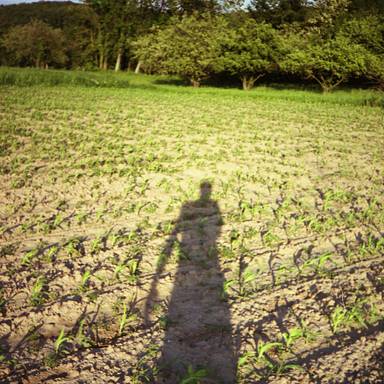
I love this camera! I recently bought one and now I'm waiting for results...

Excellent. I would get one if only I could convince my wife to let one more camera in the house....

Bought one on Monday....waiting for it to arrive. This has made me even MORE excited!

Picked up a mint looking (and working) one today for only 20€, really looking forward to using it next week!!! Very nice review!!!
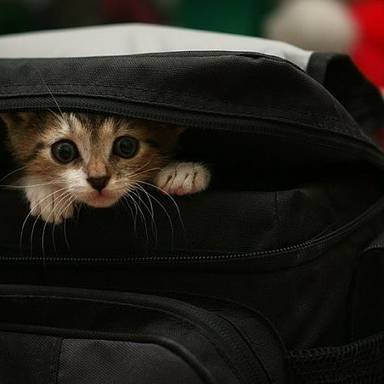
so sad..changed mine twice & still having problem. The red flag kept popping up, refusing to let me take pics.

Bought one saturday! I'll finish the test roll and send it to the lab in the next hour or so.
@franty good luck. @snowybub if you are sure you are operating it properly in the right light, there is nothing to stop you trying to repair it. It would be worth it for the experience! www.flickr.com/groups/olympustrip35/discuss/721576223452371… amongst others.
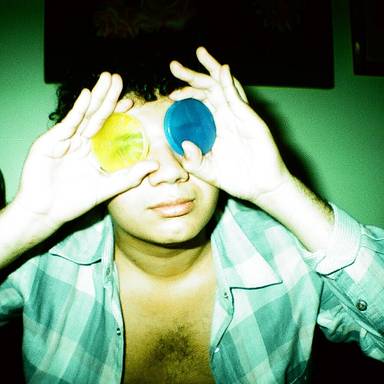
i using this camera, realh is amazing...! i love it so much!
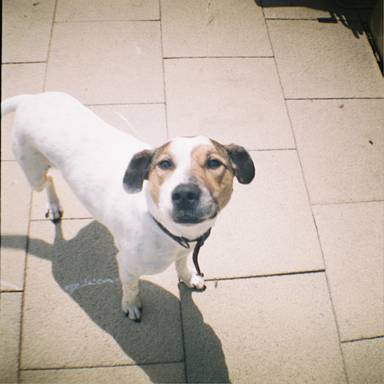
Nice review. My first roll is just done and can't wait

Very advanced point and shoot without any battery! It is a solar powered light meter which enables a fully auto setup! While at the same time one can have it sort of manual and adjust the aperture and speed ! Takes great photo , super light and easy to carry!
Hi, I like the look of the trip 35 but I'm wondering how to get more vignetting. It's a trait I adore and lean towards more the La Sardina however the glass lense of the Trip does produce much sharper images. Any advice? (New to film)
More Interesting Articles
"the domestic camera" at kbr barcelona through the eyes of sibux.

Check out the results of the Open Call in collaboration with KBr Barcelona Photo Center, in Spain. The photographers were invited to rediscover the more amateur side of analogue photography and to document the most special moments of their daily life with our films and cameras.

Gallery: The World in Metropolis

To commemorate five years with the LomoChrome Metropolis, in this gallery we're looking at the world drenched in the familiar muted tones, contrasts and grain of the well-loved film stock!
Community Gallery: Eerie Film Photos for Halloween

The Lomography website is home to many fantastic images exuding various moods and themes. In celebration of the Halloween season, we've compiled photos which seemingly tell mysterious, yet oddly familiar stories. Which classic movies do these images remind you of?
Lomomatic 110 Glass Lens Camera

The Lomomatic 110 is your compact companion for every adventure! Featuring a glass lens, automatic exposure, day and night aperture modes, controllable ISO settings and a flash, get ready to capture your memories in vibrant, super-sharp 110 frames, with a depth of field you’ve never seen on a 110 image ever before!
Capturing Life with the Lomo'Instant Wide Glass: First Impressions by Fumihiko Suzuki

Fumihiko Suzuki is a Tokyo-based freelance photographer and editor of "Film Camera Life". Today he tells us all about his experience with the brand-new Lomo'Instant Wide Glass!
Gallery: Creating The Ominous with Lomography XR Redscale

We take a look at our community member's photos using Lomography XR Redscale and see how this film stock can be used creatively for the Halloween Season
Kim Kkam's Mystical Portraits on LomoChrome Color '92 120 Film

Photographer Kim Kkam, who specializes in portrait photography, shares his latest photos taken with LomoChrome Color '92 120 ISO 400, centered around the theme of the "Blue Dragon".
Your Quick Guide to Analogue Photography

Don’t know your 35 mm from your 110? Never heard of medium format? Confused about cross-processing? This guide gives a brief overview of everything analogue and you’ll be an expert in no time! Get a head start with film photography with our downloadable 12-page PDF guide.
A Very Spooky La Sardina DIY Customization with Bananna Bones

New Jersey-based designer and illustrator, Anna Santaguida a.k.a Bananna Bones, joins the Lomography community to share her Halloween-themed La Sardina DIY customization!
Amy Elizabeth on Creative Analogue Photography Communities and Running Film Lab 135

Amy Elizabeth is back with us to chat about how she continues to run the experimental Film Lab 135, as well as foster an exciting new analogue community called The Art Lab.
Chen Fengyi of the Daguerre Darkroom Studio Tests the Minitar-1 Art Lens and Lomography Film

Chen Fengyi runs the Daguerre Darkroom Studio, known for its reputation and history in black-and-white photography in Taiwan. We invited Chen to try out the Lomo Minitar-1 Lens and experience the unique features of Lomography. Check out the interview!
LomoChrome Color '92 Sun-kissed ISO 400 Film

Give your photos an enchanting ’90s golden-hour glow and immerse yourself in nostalgia with this versatile new color negative emulsion. Available now in 35 mm, 120 and 110 formats.
Available in our Shop
Introducing Coleman Dupuis (@kk4422) — North America's Honorary LomoHome of October 2024

For the October edition of Lomography USA's LomoHome of the Month, we're highlighting community member Coleman Dupuis (@kk4422) for their Lomographic way of documenting the world around them.
Portrait Photography on LomoChrome Color '92 Sun-kissed Film by Thai Photographer Arm (@a2mfilm)

We sent a roll of our latest LomoChrome Color ‘92 Sun-kissed film to Thai photographer Arm who captured some dazzling portraits. Read our interview and check out all the photos from this portrait session to be inspired.
Writer's Notes: Trying 120 Film for the First Time

Hello! I come out of the woods to tell you about my first time experience with 120 film. Stray cats, wildflowers and other random things – here's a snapshot of almost a year I spent acquainting myself with medium format!
Find Out More About
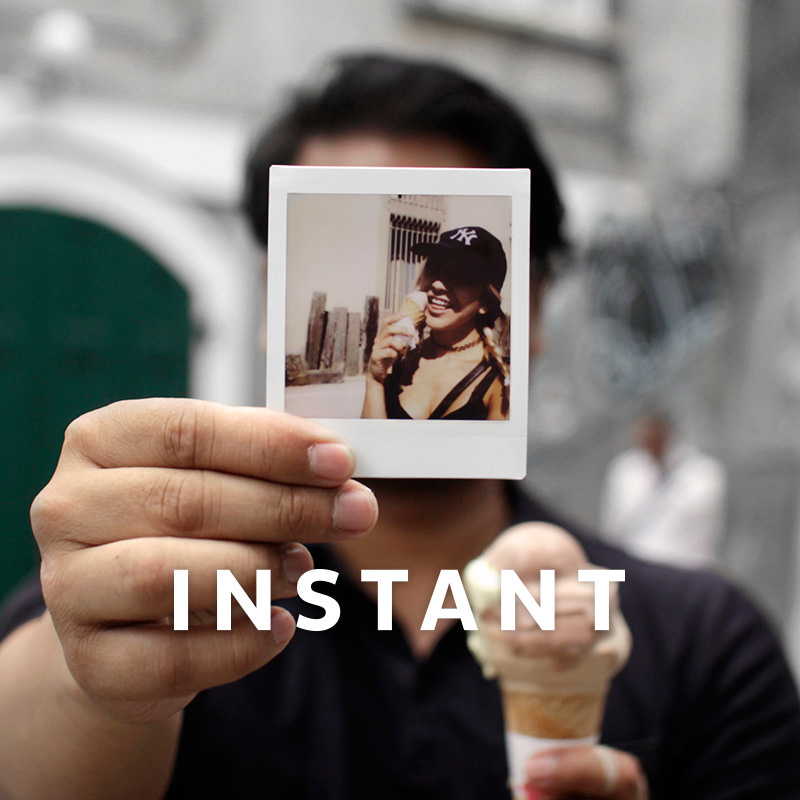

IMAGES
VIDEO